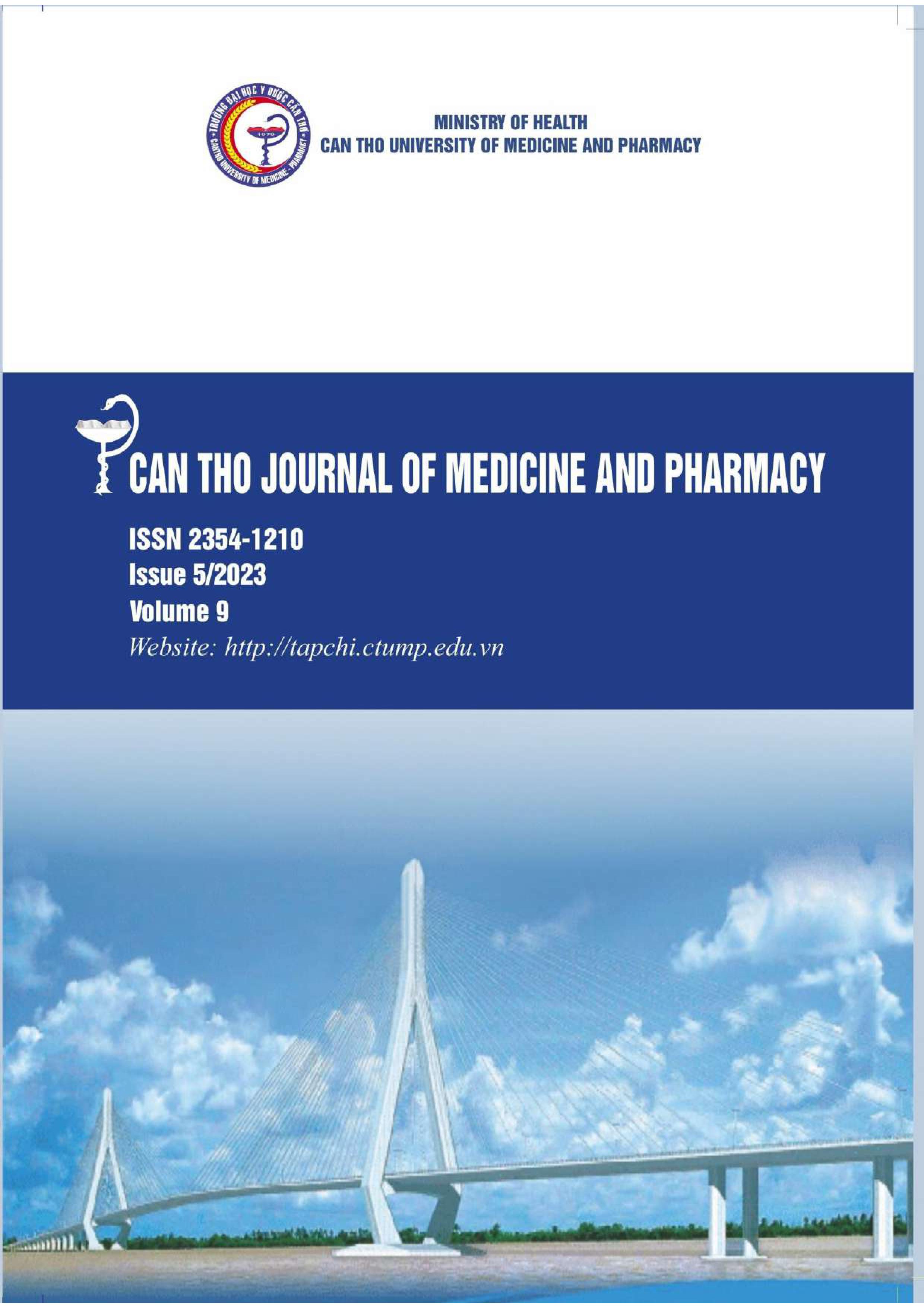SOME FACTORS RELATED TO THE DURATION OF INPATIENTS TREATMENT OF HERPES ZOSTER BY HE-NE LASER THERAPY AT CAN THO DERMATO-VENEREOLOGY HOSPITAL
Nội dung chính của bài viết
Tóm tắt
Background: Shingles is caused by the Varicella-Zoster virus. The duration of hospitalization prolong will increase the risk of superinfection, costs for treatment, and quality of life. Objectives: (1) To describe clinical manifestations of herpes zoster inpatients at Can Tho Dermato-Venereology Hospital. (2) To survey some related factors related to the duration of hospitalization of herpes zoster by He-Ne laser therapy at Can Tho Dermato-Venereology Hospital. Materials and methods: the cross-sectional study on all shingles patients admitted to Can Tho Dermato-Venereology Hospital during the study period. Results: The proportion of group patients >60 years old was 54.9% higher than the group of patients ≤60 with 45.1%. Most shingles patients had secondary school degrees with 69%. The rate of patients admitted to the hospital early ≤5 days after symptom onset was 72.6%. Patients hospitalized for ≤7 days accounted for 77%. Patients with mild illness had the highest rate with 58.4%, and the rate of medium and severe illness with 36.3% and 5.3% respectively. Most patients had superinfection with 72.6%. The group of patients admitted to the hospital early ≤5 days had a shorter duration of hospitalization than the group of patients admitted to the hospital late after 5 days. In the patient's group with superinfection and more severe disease, the duration of hospitalization was longer than in the patient’s group without superinfection and the severity of the disease was milder. All differences were statistically significant, p<0.05. Conclusion: Early treatment with He-Ne laser therapy helps to improve the severity of the disease and the state of superinfection and shorten the patient's hospital stay.
Chi tiết bài viết
Từ khóa
duration of hospitalization, herpes zoster, He-Ne laser, related factors
Tài liệu tham khảo
2. Boris Ehrenstein et al (2019), “Diagnosis, treatment and prophylaxis of herpes zoster”, Z Rheumatol, 79(10), pp. 1009-1017.
3. Désirée van Oorschot et al (2021), “A systematic literature review of herpes zoster incidence worldwide”, Human Vaccines & Immunotherapeutics, https://doi.org/10.1080/21645515.2020.1847582.
4. Farhang Babamahmoodi et al (2015), “Clinical Manifestations of Herpes Zoster, Its Comorbidities, and Its Complications in North of Iran from 2007 to 2013”, Neurol Res Int, 2015: 896098.
5. Folusakin Ayoade et al (2020), Varicella Zoster, StatPearls.
6. To Thi Thuy Hang, Vo Hong Khoi (2018), “Study on characteristic of pain in Zona according to Visual analogue scale (VAS)”, Vietnam Medical Journal, 1(467), pp. 100-103.
7. Ho Chi Minh city Hospital of Dermato-Venereology (2019), Guidelines for the diagnosis and treatment of Dermatological Diseases, Medical Publisher, Ho Chi Minh.
8. Kosuke Kawai, Barbara P.Yawn (2017), “Risk Factors for Herpes Zoster: A Systematic Review and Meta-analysis”, Mayo Clinic Proceedings, 92 (12), pp. 1806-1821.
9. National Hospital of Dermatology-Venereology & Hanoi Medical University (2019), Clinical image, diagnosis & treatment in Dermatology, Medical Publisher, Ha Noi.
10. Peter G. E. Kennedy et al (2018), “Clinical Features of Varicella-Zoster Virus Infection”, Viruses, 10(11), pp. 609.
11. Pragya A. Nair et al (2020), Herpes Zoster, StatPearls.
12. Nguyen Quy Thai (2011), "Evaluation of combined treatment results with laser Hene therapy for Zona at Dermatology Department in Thai Nguyen Central General Hospital”, Journal of Science and Technology, 81(5), pp. 147-152.
13. Vu Ngoc Vuong et al (2019), “Clinical efficacy of electroacupuncture combined with acyclovir in the treatment of Zona”, Vietnam Medical Journal, 2(479), pp. 30-33.


